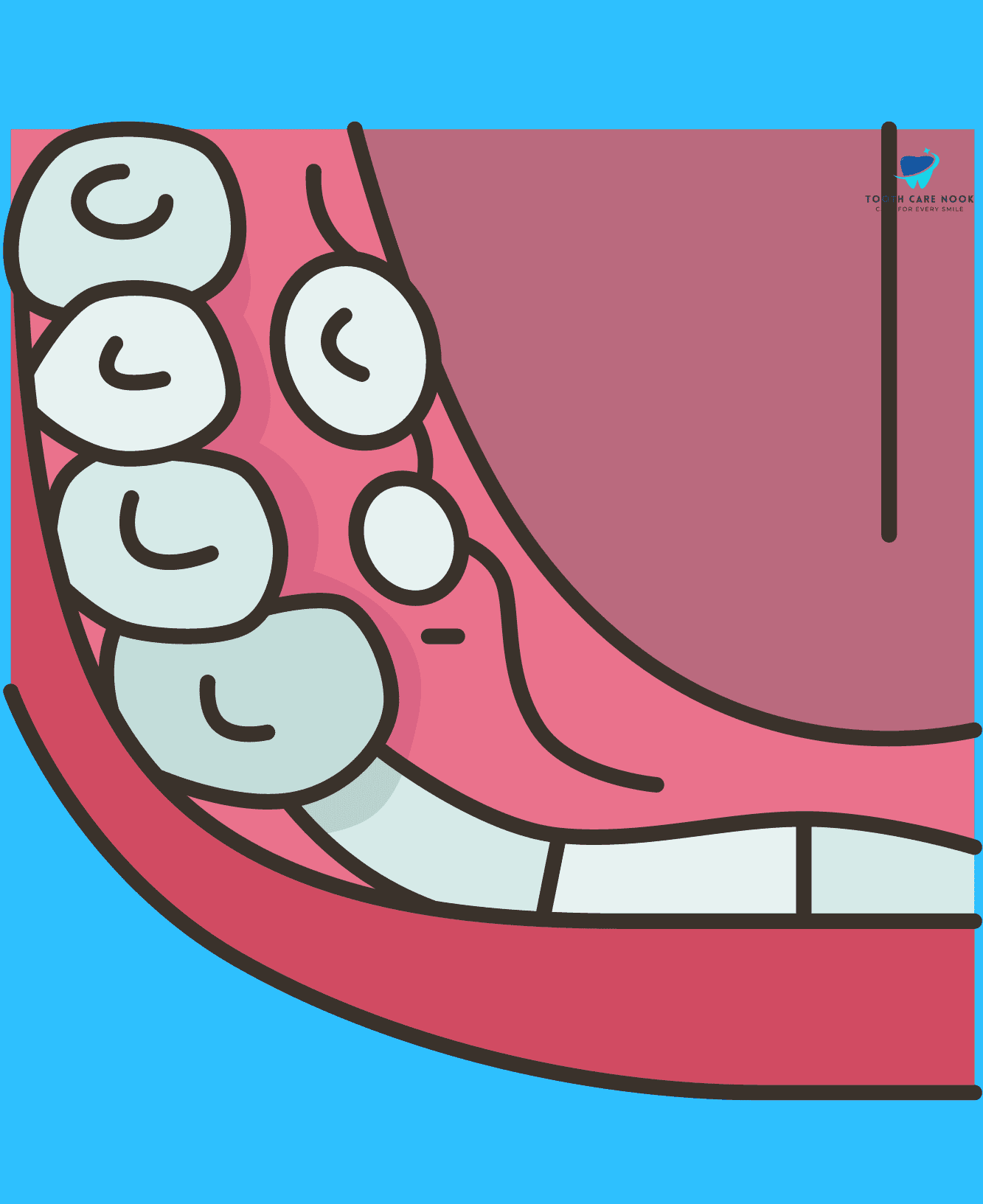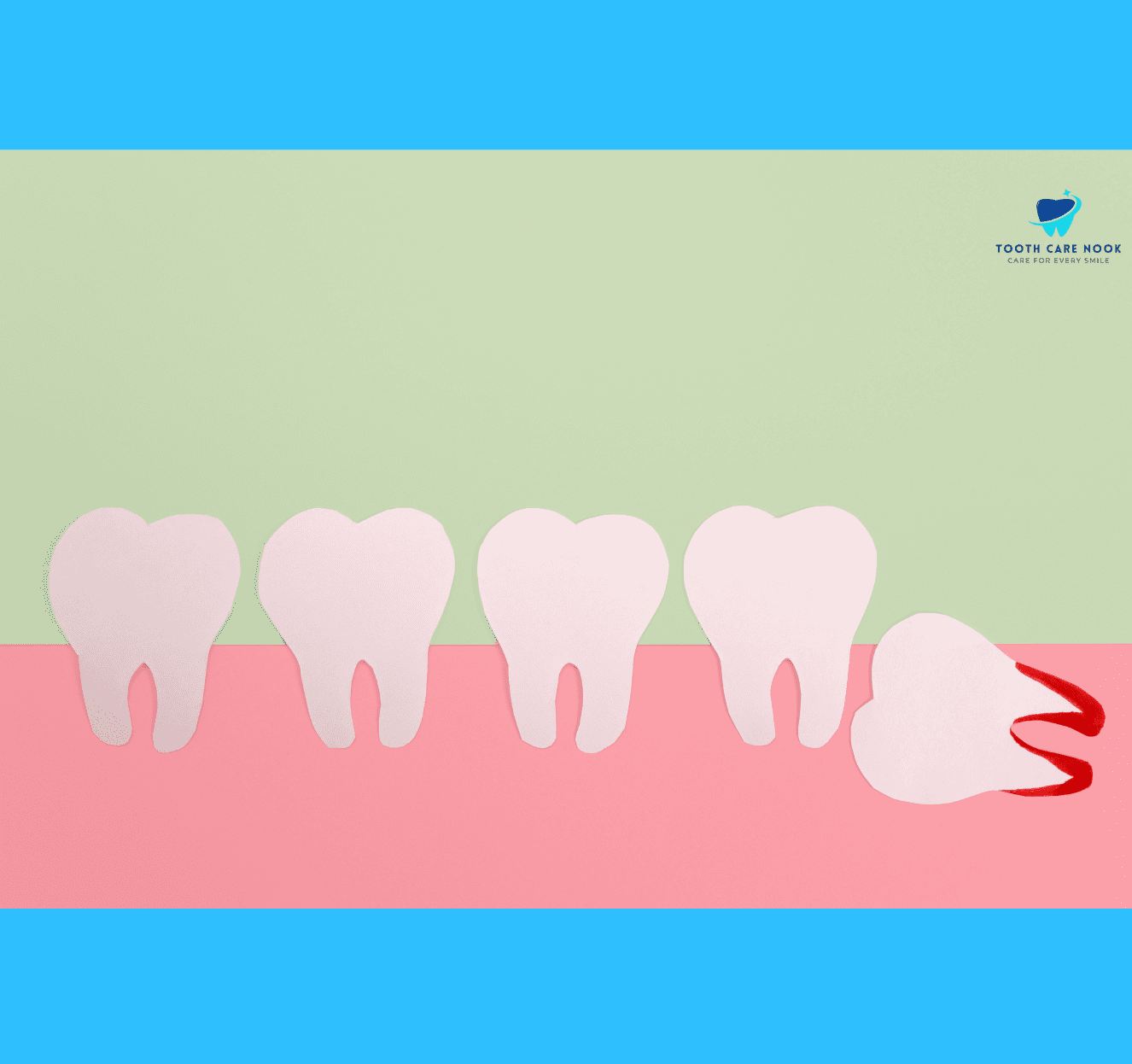Hyperdontia is a dental condition, that involves the presence of supernumerary teeth alongside the normal set. These additional teeth can develop in any area of the mouth, potentially causing issues such as overcrowding or misalignment.

Different Types of Hyperdontia
Here is a breakdown of the different types of hyperdontia based on two categories:
Based on Location:
Mesiodens:
The additional teeth grow in the upper gum between the two central incisors(the front of the mouth).
Paramolar:
Extra incisors that grow next to molars, either on the cheek side or on the tongue side.
Distomolar:
An additional tooth that grows in line with the other molars rather than around them.
Based on Shape:
Supplemental:
Some teeth resemble the normal in shape and structure but exceed the normal number of teeth in the dental formula.
Conical:
The small and peg-shaped teeth have a conical appearance.
Tuberculate:
Teeth with multiple cusps or tubercles on the crown that have a more complicated shape.
Compound Odontoma:
They consist of small multiple teeth which are like structures grouped.
Complex Odontoma:
An irregular tooth formation that is caused by disorderly tissue growth.
Why is There a Tooth Growing out of My Gum | Potential Causes
Teeth that grow out of gum are not always easy to diagnose. But some potential causes for this phenomenon are
Impacted Tooth:

When your tooth is impacted, it can give the appearance of a tooth growing out of the gum.
Genetic Factors:
Genetic conditions or syndromes may cause extra incisors or unusual tooth eruptions.
Dental Cyst or Tumor:
Teeth growing in the upper gums and in the lower gums may cause a tooth that looks like a structure to protrude from the gum tissue. This is due to a dental cyst which develops from the tissues involved in tooth formation.
Dental Injury:
It results in the displacement of teeth or tooth fragments. It can appear as if a new tooth is growing from a tooth fragment embedded in the gum tissue.
Eruption Cyst:
An eruption cyst is a fluid-filled sac that forms over an erupting tooth. It can appear as a bluish-purple bulge on the gum tissue where the tooth is trying to grow out of your gum.
Hyperdontia Symptoms
Hyperdontia does not cause discomfort in most cases but complications can arise if the teeth exert excessive pressure on the gums or jaws. Some of the hyperdontia symptoms may include:
- Infection in surrounding tissues.
- Discomfort or pain.
- Overcrowding in the mouth.
- Swelling in the surrounding gum tissue.
- Tenderness or soreness in the gums.
What Problems Supernumeraries Teeth Can Create?
- Supernumerary teeth can cause misalignment of existing teeth.
- They can delay the eruption of permanent teeth or cause primary teeth to be retained longer than usual, potentially affecting the normal development of the dentition.
- Aesthetic concerns, particularly if they are visible when you smile or talk to someone.
- They can affect biting and chewing function and speech articulation.
- Complications such as tooth resorption or sinus problems can occur due to interference of supernumerary teeth with adjacent teeth, roots, nerves, or sinus cavities.
Syndromes Associated with Supernumerary Teeth
Some of the syndromes associated with supernumerary teeth include,
- Ehlers-Danlos Syndrome (EDS).
- Gorlin-Goltz Syndrome.
- Incontinentia Pigmenti.
- Gardner’s Syndrome.
- Cleft lip and Palate.
- Cleidocranial Dysplasia.
- Axenfeld-Rieger Syndrome.
Treatments for Multiple Teeth Growth | Hyperdontia
Treatment of Underlying Conditions:
It addresses the underlying disorder in addition to managing the dental manifestations. This includes multidisciplinary care which involves medical specialists, genetic counseling, and supportive therapies.
Extraction:
Surgical extraction of multiple teeth is a common treatment. When they cause symptoms such as pain, swelling, or interfere with your adjacent teeth, it is done.
Orthodontic Treatment:
Orthodontic treatment may be necessary to correct dental issues caused by extra teeth, especially when they contribute to dental crowding, misalignment, or malocclusion.
Management of Complications:
If your extra teeth cause complications like cysts, tumors, or infections, the treatment of cysts or tumor removal, root canal therapy, or antibiotics to treat the infection is required.
Can a Tooth Grow on the Roof of Your Mouth
Yes, a tooth can grow on the roof of your mouth, though it’s rare. This condition may occur due to the presence of a supernumerary tooth, known as a mesiodens. It can grow in rare cases, as part of a palatal oronasal fistula where dental tissue protrudes into the palate.
Hyperdontia X-ray

X-rays are crucial for accurate diagnosis and treatment planning in cases of hyperdontia. A hyperdontia X-ray reveals the presence of supernumerary teeth. These additional teeth can appear in various locations within the dental arches.
« Back to Glossary Index
